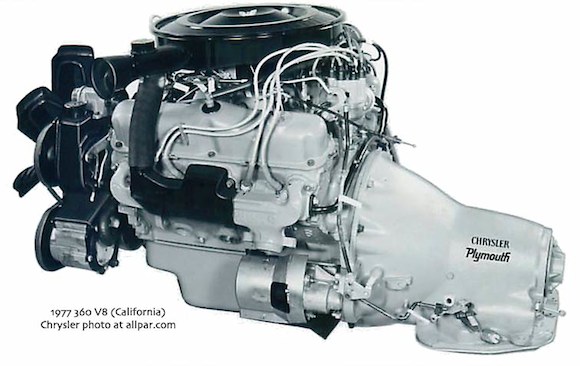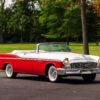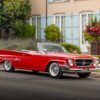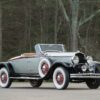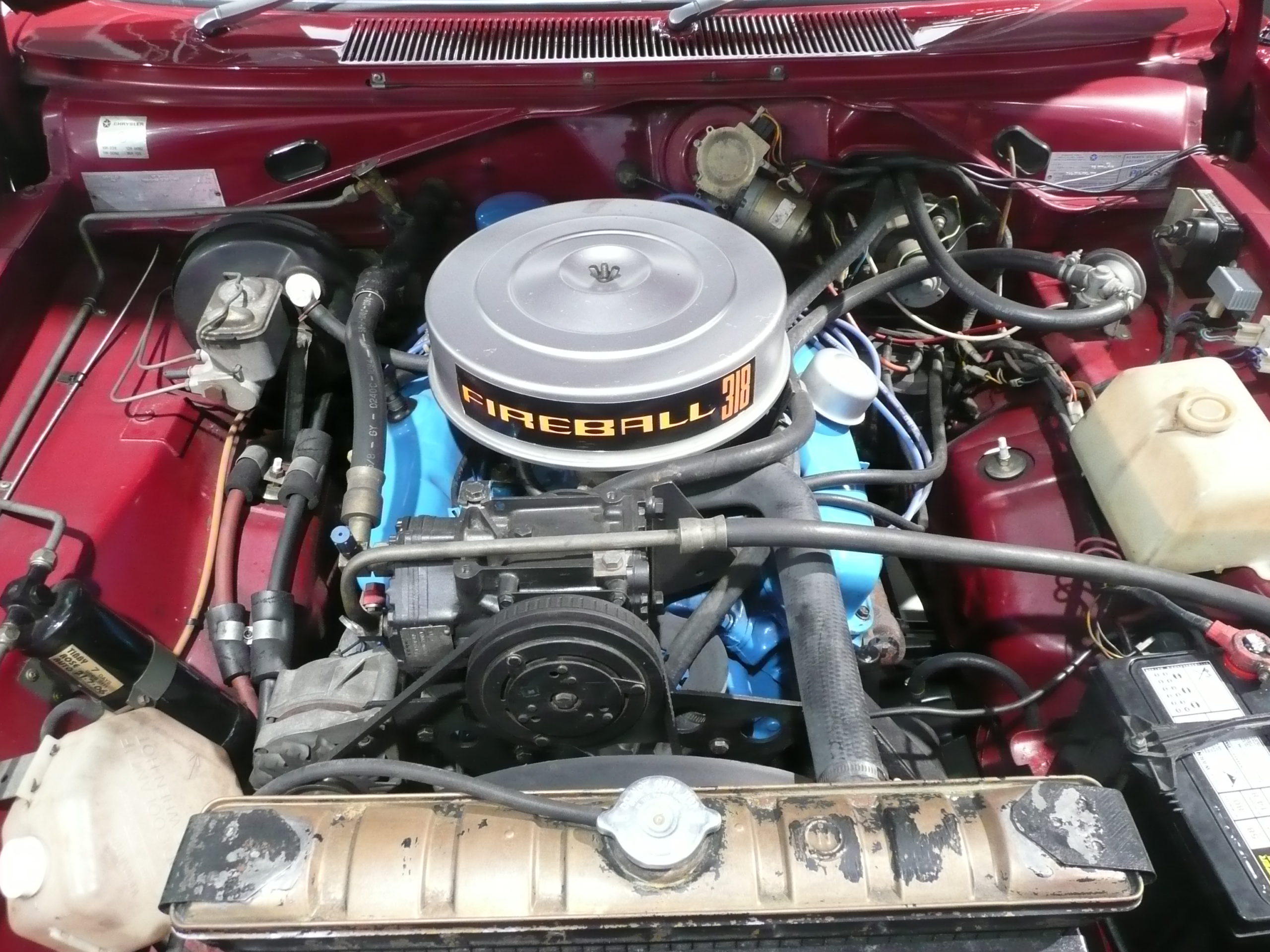Chrysler LA Small Block V8
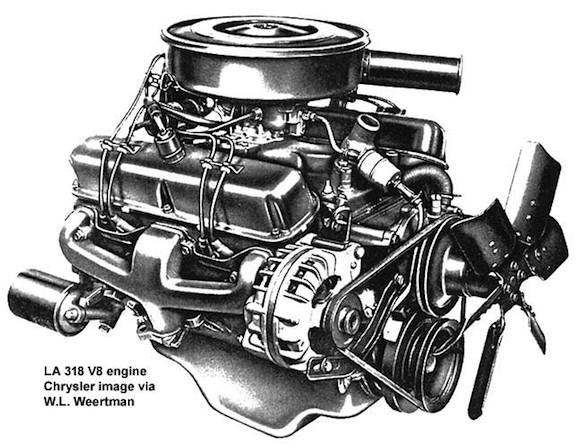
CHRYSLER LA SMALL BLOCK V8 BACKGROUND
Chrysler’s LA small block V8 was developed from the earlier A-series V8. The “LA” moniker stands for “Light A”, or a lighter-weight version of the A-block. In fact, the LA-series small block was fully 50 pounds lighter than the A-series engine it replaced. They both shared the same 4.46” (113mm) bore spacing. The LA-series engine was manufactured in various forms from 1964 through 2003 at Chrysler’s Mound Road Engine Plant in Detroit MI, as well as in plants in Mexico and Canada. During that time, the LA-block saw many different displacements and configurations, and ultimately served as the foundation for the Viper V10 (they just added two more cylinders to the LA-series 5.9 (360 cid) V8). While the Viper V10 had an aluminum block, all LA-series V8s had cast iron blocks.
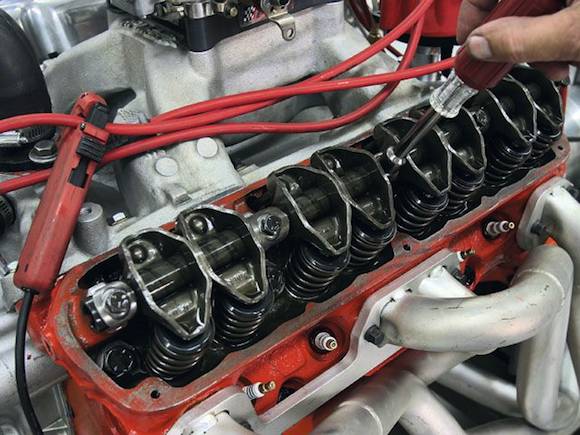
ABOVE: In many ways, the Chrysler LA Small Block V8 followed the pattern of the Chevy small block with siamezed intake ports and the 1-2-1 pattern of the exhaust ports, not to mention the rear-mounted distributor. However, while the Chevy had stud-mounted rockers, the LA-series engines always had their rocker arms on shafts, as seen here.
LA-SERIES SMALL BLOCK V8 CONFIGURATION
The LA-block was a 90-degree cast iron V8 with 4.46-inch (113mm) bore spacing, an in-block cam operating lifters and pushrods which actuated rocker arms on rocker shafts. Early LAs had solid lifters and cast malleable iron rockers, while later engines had hydraulic lifters and stamped steel rockers. Early crankshafts, and those on lower-output versions, were cast, while later and higher-output versions got forged steel cranks. The distributor was located vertically at the rear of the engine, driven off the back end of the camshaft. The combustion chambers of all LA-series V8s are wedge-shaped rather than polyspherically like earlier Mopar V8s.
LA-SERIES SMALL BLOCK V8 SPOTTERS’ GUIDE
Mopar V8s are actually pretty easy to figure out, compared to say Pontiac. In modern times (1960s and later), there were basically only three V8 engine families. The Big Block (383, 413 and 440), the 426 Hemi, and the LA-series small block. The Hemi is really a Big Block with enormous heads on top. And all big block Mopar V8s have the distributor exiting the front of the engine at a 45-degree angle toward the passenger-side. Further, the Hemi has massive valve covers with the spark plugs coming right out of the centers of those covers. All LA-series small block V8s have the distributor located at the back of the engine, vertically, just like a Chevy small block V8. So, in trying to ID an LA-series engine, just look for the distributor at the back of the engine.
The Chrysler LA Small Block V8:
273 cubic inch (4.5 Liter) V8
The first LA-series small block V8 to be produced was the 273 in 1964, and continued through the 1969 model year. It had a 3.625-inch (92mm) bore and a 3.31-inch (84mm) stroke, and pre-1968 engines had solid (mechanical) lifters and cast-iron rocker arms. Hydraulic lifters and stamped steel rockers were adopted during the 1968 model year. Initially, the 273 was rated at 180-horsepower. By 1965, they’d boosted compression to 10.5:1 with a 4-barrel carburetor and a hotter cam, making 235-horsepower. This configuration was only available through 1967. As a special one-year-only high performance variant with a 0.500-inch lift cam, solid lifters, factory headers and a Holley 4-barrel, making 275 horsepower (over the magic bogey of one-horsepower-per-cubic-inch). It was only available in a special edition of the Dodge Dart called the “D-Dart”. The “D” referred to NHRA D-stock drag racing, and that’s what the D-Dart was meant for.
BELOW: This 1966 Plymouth Barracuda has a 273 LA Small Block V8.

318 cubic inch (5.2 Liter) V8
There were actually two 318 V8s in Chrysler’s engine stable. The older A-block had a 318 V8, and now the newer LA-series small block also had a 318. They both shared the same bore and stroke of 3.91 inches (99.31mm) and 3.31 inches (84mm) respectively. They simply bored out the 273 to create the 318, as their strokes were the same. Introduced in 1967, the 318 ran almost unchanged until 1991 when it was reengineered and reintroduced in 1992 as the 5.2L Magnum V8, which was a workhorse engine that powered Chrysler, Dodge and Plymouth cars, Dodge and Ram trucks and Jeeps until 2003. However, this earlier carbureted version is the focus of our discuss here. They came with hydraulic lifters and single 2-barrel carbs initially, although later higher-output police versions used Carter and Rochester 4-barrels starting in 1978. Electronic Throttle Body Fuel Injection was adopted on the Chrysler Imperial from 1981-1983. In 1985, all 318s got roller lifters and fast-burn heads. From 1988 to 1992 a roller cam was added along with a new throttle body EFI system co-designed by Chrysler and Holley, and was used on all truck and van applications.
BELOW: This is a 340 4-barrel engine in a ’68 Plymouth Barracuda.
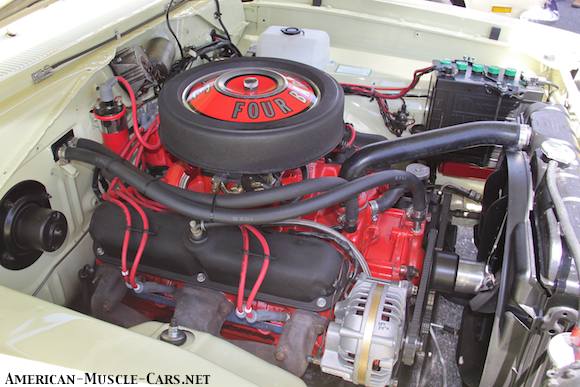
340 cubic inch (5.6 Liter) V8
Once again, Mopar left the stroke alone at 3.31 inches (84mm), but bored it all the way out to 4.04 inches (103mm) creating the 340 V8 was intended as a lightweight, high-output engine for racing whether at the strip or on the street. This intended mission called for stronger guts, so the 340 got a forged and shot-peened steel crankshaft, connecting rods and pushrods, along with forged aluminum pistons. The 4-barrel carburetor was mounted to a split-plenum high-rise intake manifold with high flow cylinder heads with 2.02-inch intake valves and 1.60-inch exhaust valves. An aggressive cam was common to both automatic and manual transmission applications until 1968, when 4-speed cars got an even more radical cam, until 1969 when all engines got the same cam again. From 1968 through 1971, the compression ratio was 10.5:1 along with other heavy-duty racing parts like a double-row timing chain and an oil windage tray in the oil pan, all adding up to an output of 275 horsepower.
Starting in 1970, Dodge and Plymouth introduced the ultimate high-performance 340, the 340 Six Pack. These engines used a special aluminum intake manifold mounting three Holley 2-barrel carburetors and making a claimed 290 horsepower. The 340 Six Pack was only available in the 1970 Dodge Challenger T/A and the 1970 Plymouth Cuda AAR. Both cars were limited-edition homologations to qualify them for the SCCA Trans Am Racing Series. These very special engines had unique engine blocks with more internal webbing and 4-bolt main bearing caps, with special cylinder heads that relocated the intake pushrods slightly to make more room for larger intake ports. They were also fitted with dual-point distributors.
Unfortunately, 1970 was the peak of the Classic Muscle Car Era and the Horsepower Wars, and by 1971 everyone was detuning their engines to pass new smog laws and to cope with unleaded gasoline. The 1971 340 V8, now with single 4-barrel, was left alone. But in 1972 the compression was dropped from 10.5:1 to 8.5:1 and small-valve heads were fitted, along with myriad new emissions gadgets. The performance was now so anemic that the forged crank was no longer needed and was replaced by a cast nodular iron crankshaft. 1973 was the last year for the 340, when it was replaced by the 360. Detroit was trying to compensate for the weak performance by enlarging their engines. Kind of counter-intuitive when you think about it.
BELOW: A 340 Six Pack out of a 1970 Dodge Challenger T/A. There are 3 Holley 2-barrels hiding under that air cleaner.
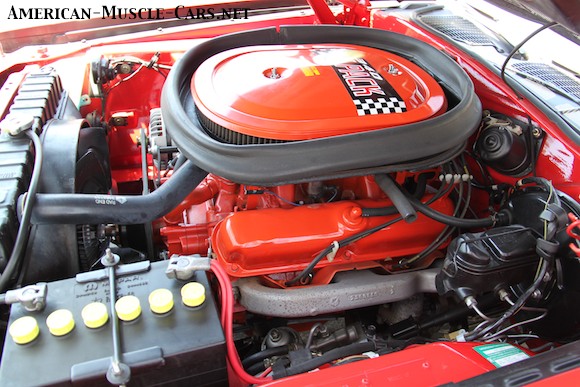
360 cubic inch (5.9 Liter) V8
The 360 cid LA-series small block V8 was introduced in 1971, and served as the replacement for the 340, starting in 1974. It had a 4.00-inch bore and a 3.58-inch stroke (the first LA-series V8 to have a longer stroke). The early 360s used the large-intake port 340 cylinder heads with smaller 1.88-inch intake valves and a single 2-barrel carburetor. Starting in 1974, a higher output option became available in the E58-code 360 with 4-barrel, dual exhaust and making 245-horsepower. But by 1975, looming smog regs forced more detuning, so that by 1980 the E58-code was now making only 185 horsepower. Starting in 1981 the 360 was used exclusively in Dodge trucks and vans.
As a side note, a special 4-barrel version of the 360 (EH1-code) was used in the 1978-1979 Dodge Li’l Red Express highly-styled pickup truck. For that brief moment in time, it was in fact the fastest US-built vehicle from zero-to-100 mph. Wow, even faster than a ’79 Corvette? The EH1 was a modified version of the E58 police engine which made 255hp. The LA-series 360 was supplanted in 1993 by the reengineered and fuel injected 5.9L Magnum V8, which powered Jeeps and Dodge Trucks.
